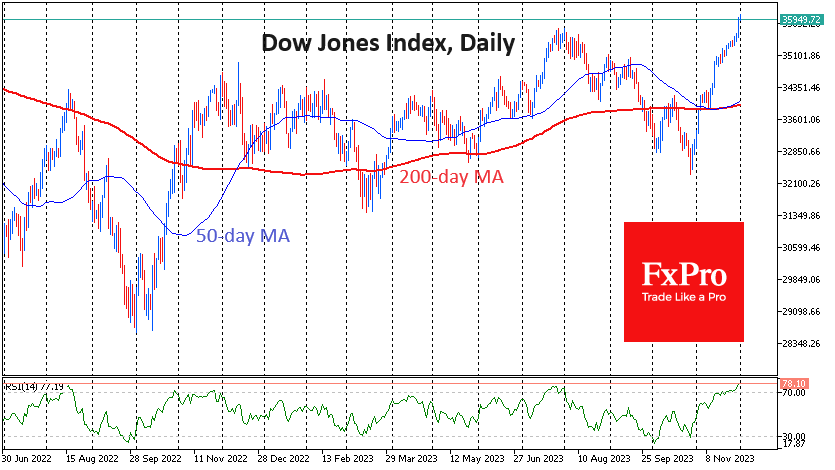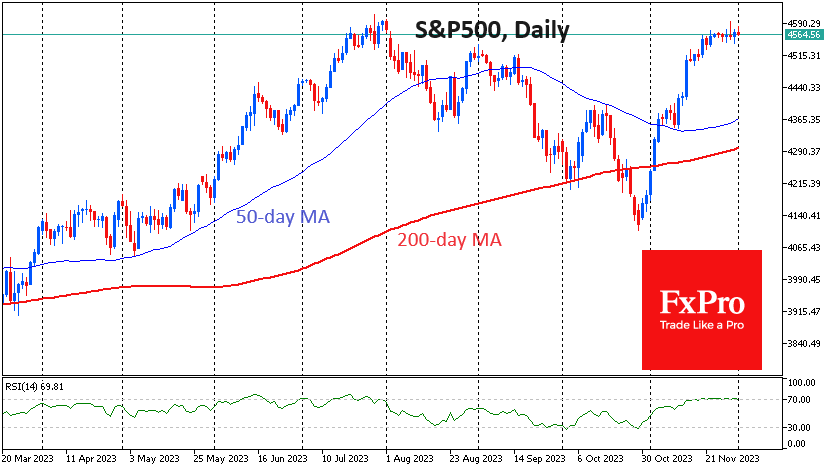The Dow Jones enters a turbulence zone
December 01, 2023 @ 17:41 +03:00
The Dow Jones has taken a high of 36,000, which is only 2.5% below its historical peak of January 2022. Above that round level, the index traded above it for a few days in November 2021 and briefly in December and January 2022.

This was a turning point three years ago and could now be again, and it’s not about the magic of numbers at all but a lack of fuel for growth. The Dow Jones rally began on 30 October after closing below 32,400 the day before. The ensuing rally of more than 11.4% was almost without a pullback.
As a result, the Relative Strength Index reached 78.10 on the daily charts, going deep into overbought territory. The index has not climbed higher since the end of 2017. In that period, the RSI spent quite a long time in highly overbought territory, but the Dow Jones 30 growth rate was two to three times lower than the current one.

There is another worry for the bulls – the performance of other equity indices. The Nasdaq100 – the guiding star of investors in recent years – has stabilised in a narrow range since the beginning of last week. An attempt to develop growth on Wednesday was met with a sell-off, and Thursday also went to the bears’ credit.

The S&P500 index, the leading market benchmark, stuck to the 4560 level. The bulls managed to close the gap from the beginning of August and seem to be exhausted. A side effect of this is the compression of volatility and the VIX index falling to multi-year lows, from which reversals have also often occurred.

The small-cap Russell2000 index, the DJIA’s opposite, has been hitting horizontal resistance near 1810 for more than two weeks now, unable to get above its 200-day moving average despite a spectacular reversal in late October.
The FxPro Analyst Team







